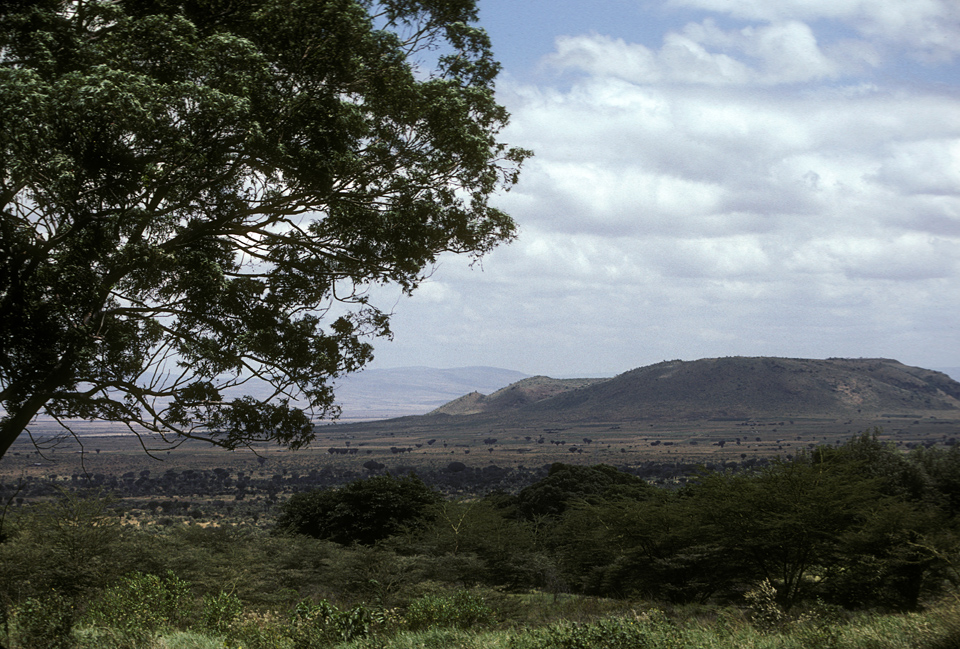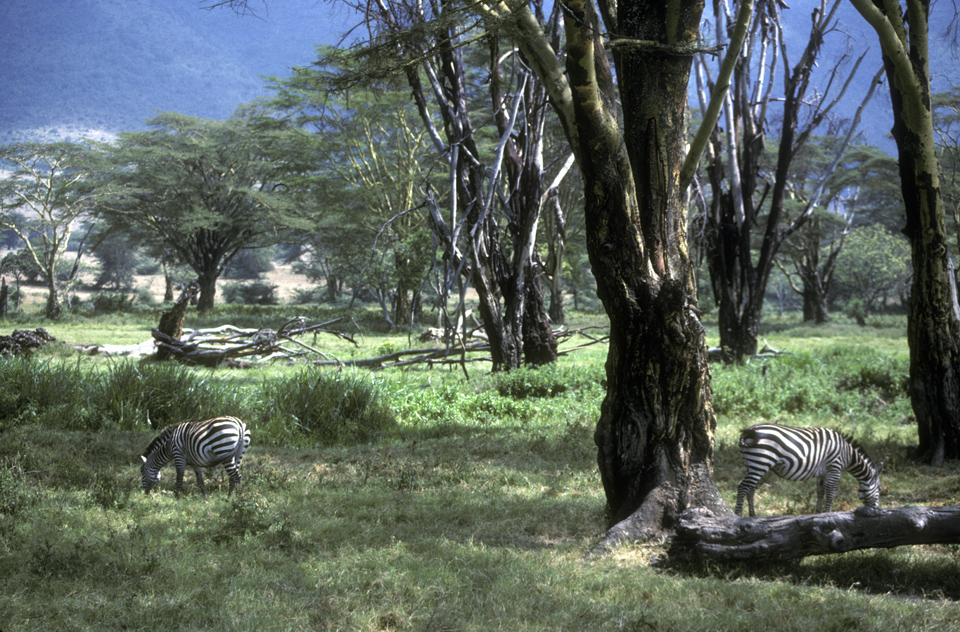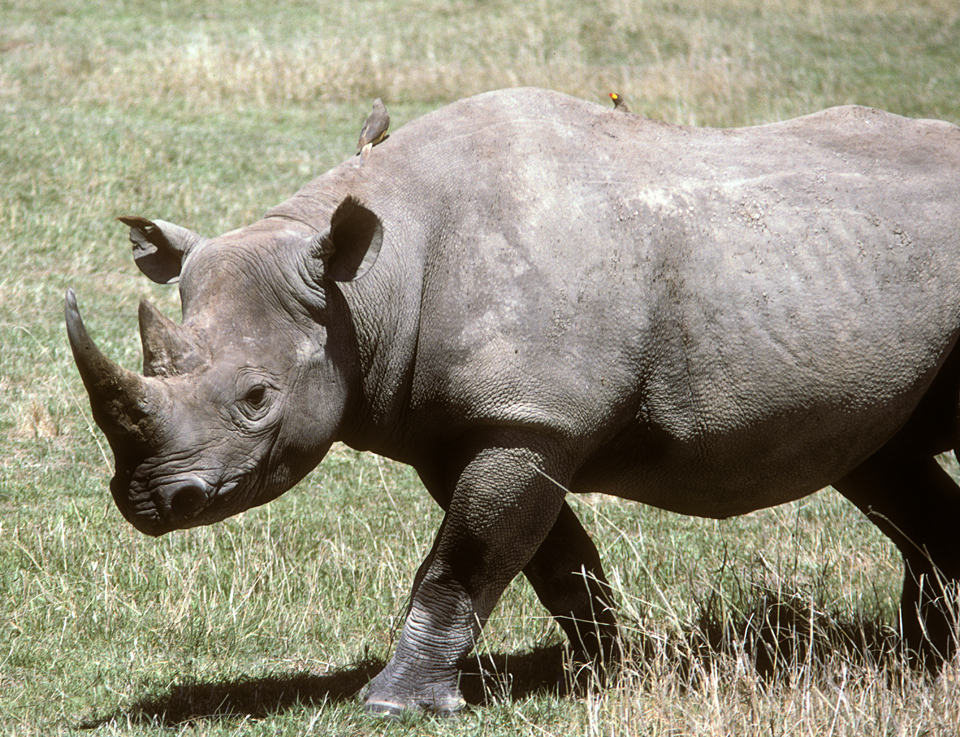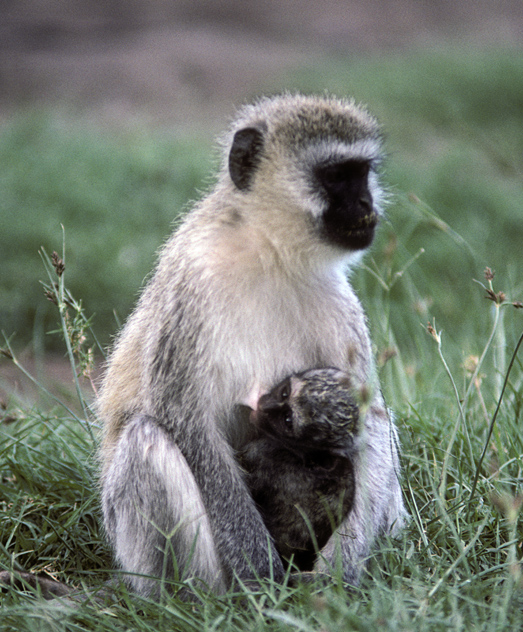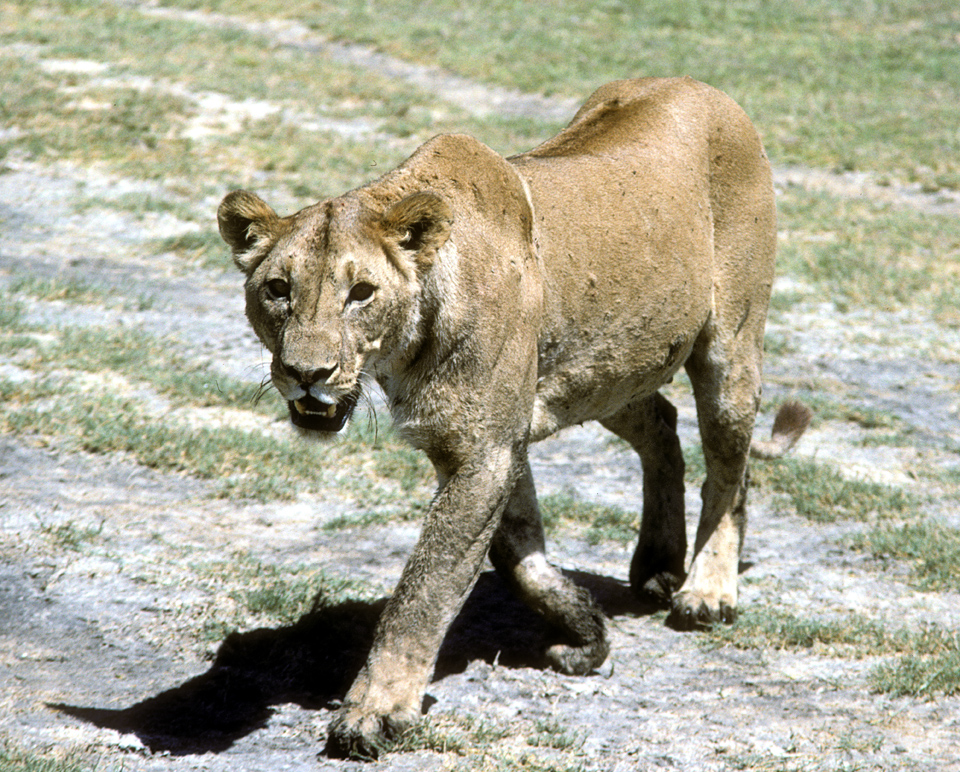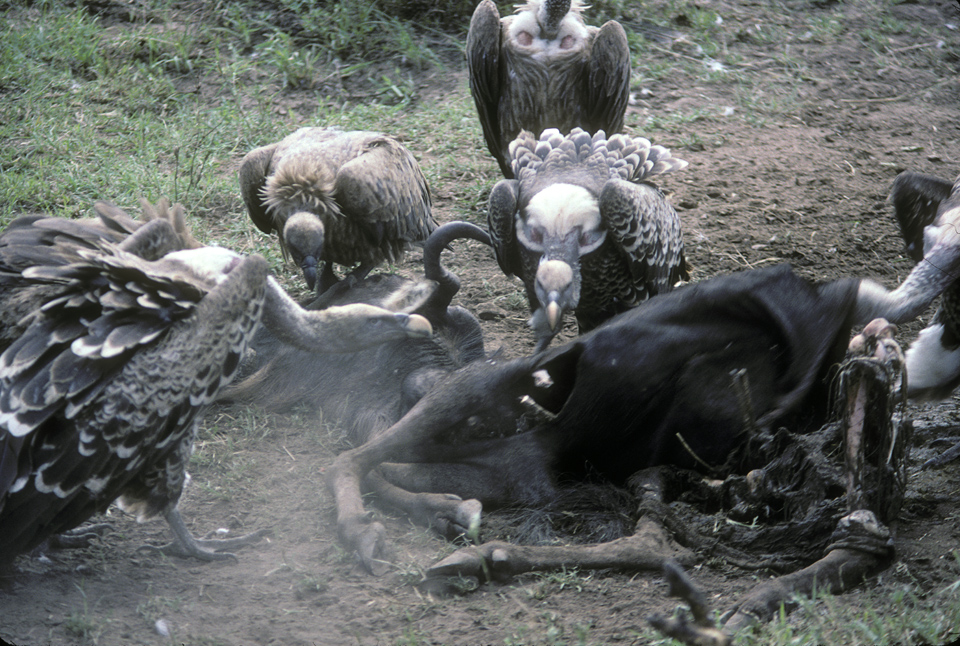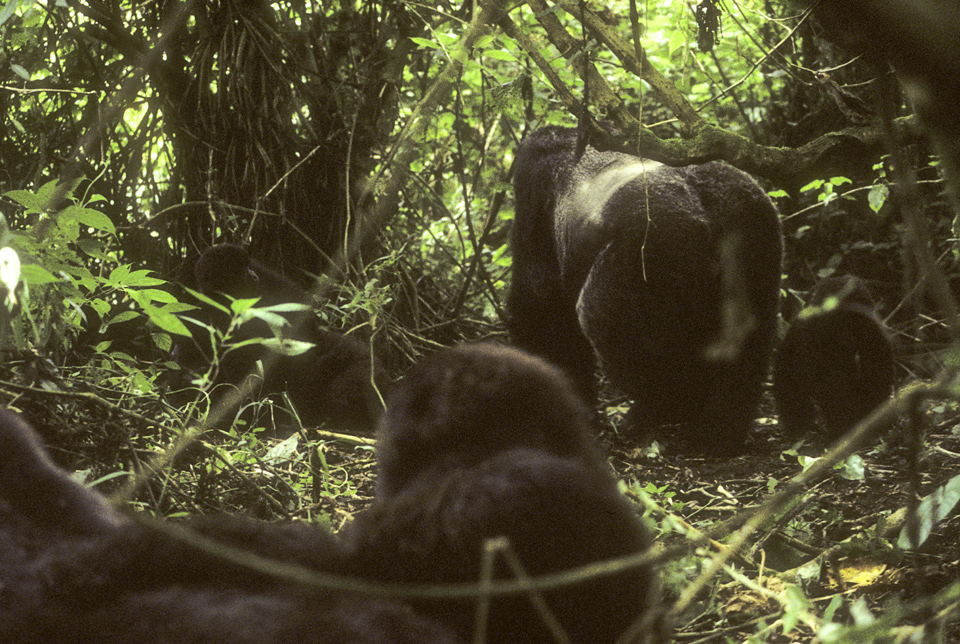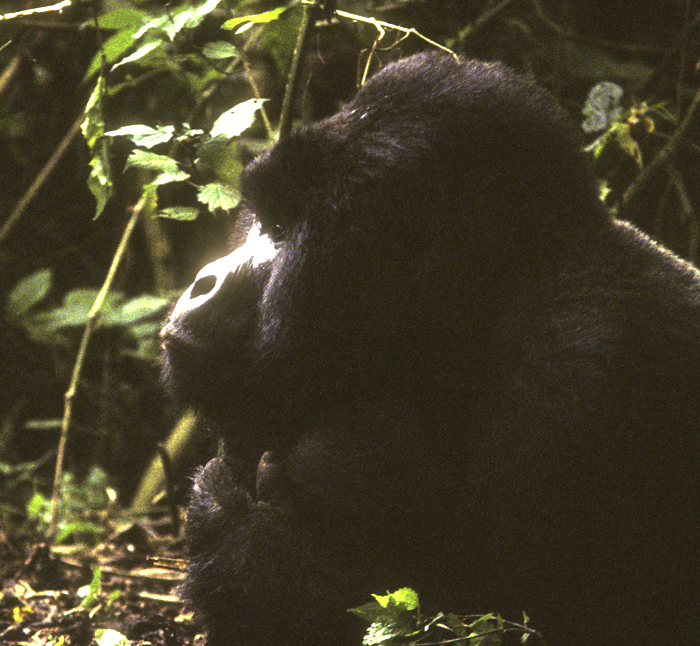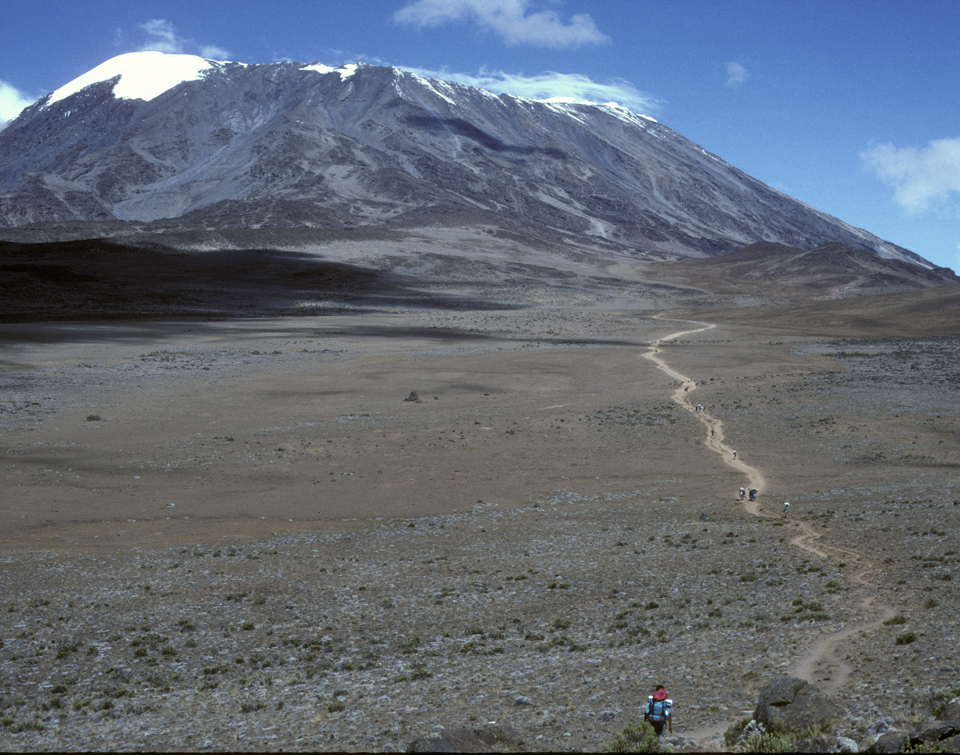Transportation was via a truck outfitted with reasonably comfortable padded seats. There were two rows of seats with the backs along the outside of the truck. So everyone faced one another and we could pass the time together as a group. The fun the group had together was a significant part of the trip. Other outfitters' trucks, where all the seats faced forward on either side of an aisle, were more restricted. We drove for 12 hours many days and sometimes at only 10 km per hour. The truck had a skeletal system and a canvas shell. The sides rolled up so we could travel sideless. If the sides were down for rain or dust, we could look out the transparent sides.
We typically ate cereal for breakfast - once in a while eggs or French toast. Lunch was generally canned hash and sardines on buttered white bread. Tomatoes and onions were always available and sometimes cheese. Dinner was generally meatless. All I can remember eating for dinner are rice, vegetables and pasta.
The initial plan had been to visit the mountain gorillas in Rwanda. But since civil war began in October, our itinerary had changed. We would drive through Burundi and visit the gorillas on the other side of the Virungas in Zaire. We first headed south and then northwest through Tanzania to Burundi. We always attracted local people when we stopped for lunch or the night. We stopped at places in the countryside, outside of villages. The people were always friendly and curious. There are a lot of children everywhere. The roads in Tanzania and Zaire are reported to be some of the worst in the world. I can remember one day when we stopped about every half hour to help pull another truck (or ourselves) out of the mud. Tanzania was dry and dusty but the people seemed to have more and were happier than in Burundi and Zaire where there was more rain and cultivation.
Passengers were getting to know one another quite well as we spent a lot of time together, a result of the extra travel required to get to these gorillas. Somehow something I said about women reading maps got twisted and I was teased about that the entire trip. We awoke nearly every day at 5 - 5:30, disassembled our tents and ate breakfast before starting out 1 1/2 hours later. The driver tried to get us ready in only an hour but was unsuccessful. Our delays resulted in driving past dark quite often trying to cover the extra distance to Zaire instead of Rwanda. Tents had to go up and dinner still had to be prepared. We got to the capital of Burundi, Bujumbura, in about one week. We camped on the shore of Lake Tanganyika and had our first shower and laundry day. Clothes tended not to dry before evening in the moister climates of Burundi and Zaire so some clothes hung from the ceiling of the truck during the day. There was either a heavy dew or rain in the night.
Burundi is a pretty, mountainous, crowded and small country. Exchanging traveler's checks for local currency at a bank is quite memorable. The usual African amount of paperwork began but getting the cash meant pushing your way towards another teller and keeping others from pushing in front of you. Tanzania wasn't like this. The commission to cash a traveler's check is 20% in Burundi and probably less than 1% in Tanzania. I still enjoyed visiting Bujumbura. Bujumbura didn't seem to be that large. The entire business district could be seen on foot rather easily. There weren't any traffic signals, just roundabouts, some yield signs and the rest is "just going for it." I don't mean to imply that cars are zipping about recklessly.
We left Burundi not far from Bujumbura and drove north through and into the mountains in this part of Zaire. I think the group really preferred the scenery in Zaire to that of wherever else we visited. We drove through Bukavu and up the west shore of Lake Kivu. We spent our night in Bukavu in a classroom at a mission. At the top of the lake we turned east and then north to Goma and on to where we camped to see the gorillas. It had taken ten long, hard days of traveling without stopping along the way. We had to get to the gorillas on schedule as reservations are taken. This area of northeastern Zaire is very volcanic. We could almost always see a volcano as we drove through Zaire to the gorillas who themselves live on volcanoes. Two groups of six went to see the gorillas on two days. The small group of six tourists, plus three guides, I was with was treated to six resting gorillas including the silverback. It took two hours of tough climbing into a volcano to find the gorillas. I was fifteen feet from the silverback, seven feet from a youngster pounding his chest and one adult female walked past me just as we arrived. We were able to spend one hour with them just lying about. Other groups of fellow tourists had more active gorillas. It began to rain and our hour was up so we headed back to the campsite. Burundi and Zaire tended to have heavy rain around noon for one to two hours. I don't want to forget to mention that our African camp guard chased elephants away during our last night here.
We had gotten stuck in mud and broken some springs in the course of getting to the gorillas. We would get stuck again, in sand, and have two flat tires but the biggest obstacle was the broken gear box when we were leaving Zaire. It happened 22 km before Goma. Fortunately no one lived nearby and we could camp unbothered for the three days it took our driver to locate and deal for a replacement. We broke down before noon and our driver told us we could probably hike into Goma in 1/2 - 1 hour. Some of us decided to hike in rather than sit around. We were camped/broken down within view of three large volcanoes - the largest, Nyiragongo, is over 11,000 feet high. It last erupted in 1977. The road is made of that lava flow and hard to hike on. To make a long story short, it began to pour halfway into Goma and it turned out to be a 22 km hike which took four hours. The Africans tend to disappear in out of the rains. We had beer and food (we were starved) on the patio of a restaurant and laughed at the long, wet, hard hike. This was a significant event on the trip. The group was really enjoying everything despite the circumstances. There were, however, those who were worrying about getting to spend time in the Tanzanian game parks. We taxied our way back to our tents. Zaire is where we probably had the most contact with Africans. The kids are always asking for pens. Many people tired of hearing "Donnez-moi un Bic."
We had a short 1/2 hour ferry ride across a small bay on Lake Victoria to Mwanza, Tanzania's second largest city. I really liked the crossing just because it was different and relaxing compared to the tough driving we'd been doing. Waiting and queueing for the last ferry crossing of the day was another experience. We headed out of town towards our campground at a local museum. It was dark and our driver got lost trying to find it. It was around 10 pm before we arrived. We had begun to be in areas of greater tourism and the campgrounds had running water for showers and laundry.
We spent Christmas day in the Serengeti National Park. We had dinner the night before, Christmas eve, at the tourist lodge. Up to this point the trip had been pretty grueling and I had thought of how easy my previous trip to Kenya had been when we stayed in lodges the entire time. Now, I'm very glad I traveled overland despite the endurance required. I would have missed all the experiences. We exchanged gifts at Christmas dinner and had a small party. There were various permanent responsibilities on the trip and one was that of barperson. We always had beer and soft drinks. People were excited with their first game viewing opportunities. After the Serengeti, we stopped at Olduvai Gorge (an early man site) on our way to the Ngorongoro Crater. The crater is the result of a collapsed volcano. It's 12 miles across and the walls are 2300 feet high. We camped on the rim Christmas night and were driven down for game viewing in Land Rovers. There is a high density of game due to the natural barrier of the crater's walls. We saw wildebeest, elephants, lions, rhinos, flamingoes, zebras, various birds (there was a large lake in the crater), monkeys, giraffes, etc. My fellow travelers were very happy.
As we left the crater and headed towards Arusha and Kilimanjaro, we stopped at a village to buy food. Because we were in prime tourist country, this village had numerous open-air shops selling mostly wood carvings. A polished ebony carving of a Maasai warrior caught my eye. I bargained for about 30 minutes, including walking away four times, without success. I finally bought the same carving at another shop for a lot less. It's my favorite souvenir although I didn't bring much back. We hadn't had dinner out during the first two weeks but we had several the last two, including a Chinese restaurant in Arusha. Lots of tourist safari activity in Arusha given its proximity to the Serengeti and Ngorongoro. It's also just a couple of hours from the hotel at which we began our hike up Kilimanjaro. About half the group left for home as Kilimanjaro is an extra week added onto the end of the mountain gorilla safari. The porters created quite a scene as they divided the load at the hotel. They had to carry food, cooking gear and theirs and our clothing and sleeping bags.
We started at 6000 feet and spent three hours hiking five easy miles through a rainforest to 8850 feet. We spent the afternoon lazily acclimatizing with a short trip to a small crater. There wasn't much to do when we reached our huts around midday every day except talk to other hikers, sleep or write in journals. Every morning on the trip was an early one, even on Kilimanjaro. Six miles and five hours later we were at 12,200 feet. The hike was almost always a gentle slope and I tended to walk virtually non-stop. I had spent every Saturday hiking in preparation in the hills behind my home for four months this past summer. The days were warmish, a sweater helped with the wind chill and nights required a jacket and hat. The day we hiked up to the last hut (15,540 feet) was New Year's Eve. I had a tremendous altitude headache and couldn't leave at 1 am for the final 4000 feet in two miles. Unfortunately, some people aren't able to acclimatize as quickly as the hike demanded. It felt as if my brain was trying to push through the sides of my skull. I remember this from Mt. Kenya too. It had been very clear that day and I have photos of the peaks, but an hour before the people with my group reached the top, it started snowing. They didn't have any view at all on top. January is a good month to visit Kilimanjaro as far as the weather is concerned. The hike to the top hut is through an alpine desert between the two major peaks. This was one of my favorite places on Kili.
With the exception of my altitude headache, I was one of only a small few who was never ill one way or another on the trip. I did, along with a handful of others, have a jigger flea lay eggs in our toes. Your body incubates the eggs. We successfully cut the dead skin away and disposed of the eggs. This was quite an event. Many people suffered from the runs at one time or another, although nothing serious. Unfortunately, one girl got malaria and could not climb Kili.
I flew from Kilimanjaro International Airport in Tanzania to Nairobi's airport. After about a six hour layover and nine air hours, I landed in London at 5:30 am. I had an eight hour layover there and one of the women on the trip, who hadn't gone on the Kili extension, met me at ten. I had a quick brunch at her home in the Wimbledon area and was able to look at her photos before hurrying back to the airport. The flight to San Francisco is 11 hours and I thought it took forever. I arrived at my front door 48 hours and 11 time zones after rolling out of bed in Tanzania. It took a full week to recover from jet lag. The first day back, I was only able to get my hair cut. I spent the entire day sitting in the living room with that feeling of awe one gets upon returning from such lengthy trips to entirely different surroundings. I later realized how incredibly relaxed I had returned despite the constant demands of overland travel. There was a record cold wave in the area while I was away. I believe temperatures were in the low twenties for quite a few days. Water pipes broke in some neighborhoods. I hadn't left my heat on but fortunately nothing happened here. I had my neighbors looking after my house and car. Numerous plants died in my yard. Three large jade plants are all drooping over.
Our trip had many memorable moments, I've tried to write what I remember and can put on paper. I had an excellent time and many of the others did too. I had a great time shopping in the small towns, talking and interacting with the local people even when we couldn't understand one another. I also enjoyed my fellow travelers. I'd like to visit the southern countries of Malawi, Zambia, Zimbabwe and Botswana next.
